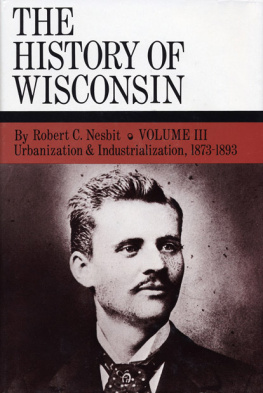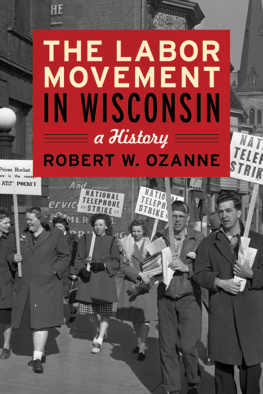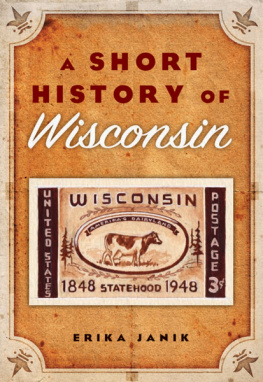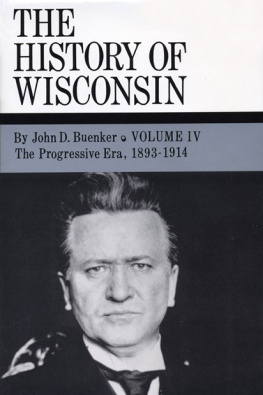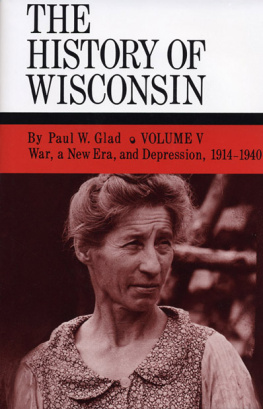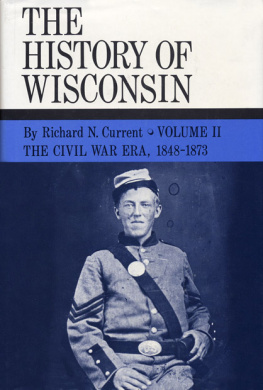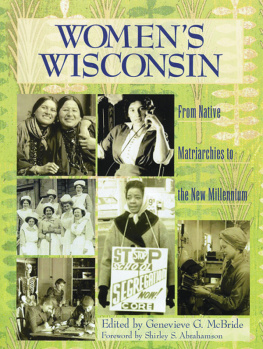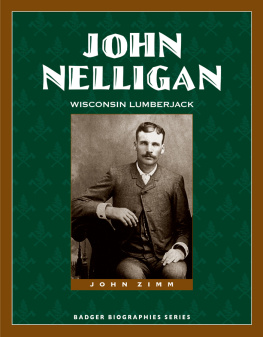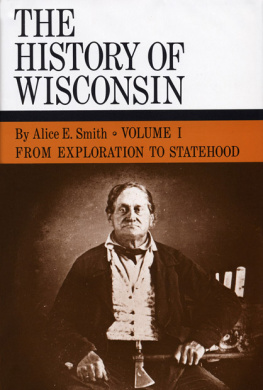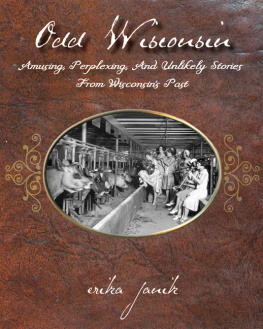THE HISTORY OF
WISCONSIN
THE HISTORY OF WISCONSIN
in six volumes
William Fletcher Thompson
General Editor
VOLUME I:
From Exploration to Statehood
By Alice E. Smith
VOLUME II:
The Civil War Era, 18481873
By Richard N. Current
VOLUME III:
Urbanization & Industrialization, 18731893
By Robert C. Nesbit
VOLUME IV:
The Progressive Era, 18931914
By John D. Buenker
VOLUME V:
War, a New Era, and Depression, 19141940
By Paul W. Glad
VOLUME VI:
Continuity and Change, 19401965
By William F. Thompson
THE HISTORY OF
WISCONSIN
VOLUME III
Urbanization and Industrialization, 18731893
ROBERT C. NESBIT
WILLIAM FLETCHER THOMPSON
General Editor
WISCONSIN HISTORICAL SOCIETY PRESS
Copyright 1985 by
THE STATE HISTORICAL SOCIETY OF WISCONSIN
E-book edition 2013
For permission to reuse material from The History of Wisconsin, Volume III: Urbanization and Industrialization, 1873-1893 (ISBN 978-0-87020-243-8, e-book ISBN 978-0-87020-630-6), please access www.copyright.com or contact the Copyright Clearance Center, Inc. (CCC), 222 Rosewood Drive, Danvers, MA 01923, 978-750-8400. CCC is a not-for-profit organization that provides licenses and registration for a variety of users.
www.wisconsin history .org
The Library of Congress has cataloged the printed edition as follows:
(Revised for Volume III of the History of Wisconsin)
THE HISTORY OF WISCONSIN
Includes bibliography and index.
CONTENTS: v. 1. From exploration to statehood, by Alice E. Smith. v. 2. The Civil War era, 18481873, by Richard N. Current. v. 3. Urbanization and industrialization, 18731893, by Robert C. Nesbit.
1. WisconsinHistory. I.Thompson, William Fletcher
F581.H68 977.5 72-12941
ISBN 0-87020-122-0 (v. 1)
PREFACE
AT FIRST GLANCE, the prospective reader might be tempted to ask whether an account of the years 1873 to 1893 is apt to provide anything essential to his understanding of Wisconsins history. (Indeed, when he was first invited to write this book, the author was heard to remark: Pretty thin gruel.) After all, the period seemingly lacks the large-scale and dramatic events around which other volumes in this series have been built: the grand sweep of history from exploration to the attainment of statehood; the supreme test of the Union in the Civil War era; the origins of the Progressive movement and its second flowering in the years between the wars; and so on. By way of contrast, the period 18731893 begins and ends with years in which there occurred severe national financial panics which ushered in depression, business failures, and widespread industrial unemployment.
In fact, however, as we shall see, the two decades between 1873 and 1893 also witnessed sweeping changes in Wisconsins economy and in the ways in which people lived, worked, associated, and responded to the society around them. Probably no other twenty-year period in the states historynot even the years of the Great Depression and the Second World Warencompassed such a major transformation of the states economy. What had been in 1873 an extractive frontier economy producing primarily grain and lumber had by 1893 emerged as a mainly urban-centered economy operating on the leading edge of contemporary industrial technology. During the same period, Wisconsins farmers largely abandoned wheat as a cash crop and undertook the long but successful transition to dairying and other forms of intensive agriculture. By 1893, urban and rural settlements dotted those parts of northern and western Wisconsin which had been only temporarily occupied twenty years earlier, and a complex railroad network crisscrossed the state.
These changes in the economy inevitably wrought far-reaching adjustments of Wisconsins social and political structures. This period was one of great population mobility, as people moved from farm to village and city and from south to north, while others entered the state for the first time or left it for new opportunities in the West. With one of the highest foreign-born populations in the nation, it became necessary for Wisconsin to accommodate immigrants within her social and political systems. The often painful transition from a craft to an industrial system of production led to extensive unrest among Wisconsins working people and to frequent and sometimes dramatic confrontations between capital and labor. Women entered the paid labor force in increasingly larger numbers. Local and state governments began to respond to the basic requirements of an emerging urban and industrial society by providing what has in our time come to be known as the infrastructure. At the same time, organized society also wrestled with the problems of the needy, in the course of which the state began to assert the type of leadership which usually is associated with the subsequent Progressive period.
* * *
One of the advantages of writing about a period as brief as twenty years is the opportunity to examine the society in some detail. Both in the text and in the photographic essays which accompany it, we have attempted to provide a portrait of the circumstances and quality of life as enjoyed and endured by both the ordinary and the extraordinary.
This six-volume History of Wisconsin represents an effort to gather in narrative rather than topical form an unusually large body of historical research based upon manuscripts, state and local government archives, newspapers and other contemporary publications, and published and unpublished scholarship, most of which is housed in the State Historical Society of Wisconsin and the University of Wisconsins Memorial Library sitting opposite one another on the Madison campus. Pulling this material together represents the work of many hands and minds beyond the infinitely greater number of those who created the original manuscripts and gathered basic data, others who preserved and collated it in usable form, and those who drew upon it for general or specialized studies. For this particular volume the author recognizes special debts. James Cavanaugh was research assistant for this volume for three yearslonger ago than I like to admitand was fortunately self-directing in a highly intelligent and productive way while I was completing my one-volume survey of Wisconsin history and serving as assistant chairman of the history department during what may fairly be characterized as interesting times on the Madison campus. Almost ten years later the National Endowment for the Humanities furnished me with a year of support and with another two years of part-time assistance; Charles Bulger was loath to leave any stone unturned.
A very considerable debt is owed to William F. Thompson, general editor of the series, who directed a corps of research assistants for the series and occupied the office next to mine during the latter years of this marathon while he was writing Volume VI among other distractions. Three members of that research team deserve special mention: George H. Roeder, Jr., Dale E. Treleven, and John O. Holzhueter, the latter our walking Wisconsin general encyclopedia. The Universitys Student Work-Study program provided Robert Munson, who ran through much of the available Milwaukee German-language press material, making notes and translations on selected topics.
The completed manuscript was too long, and it can only have profited from the necessary pruning and meticulous editorial scrutiny. If some parts remain obscure, or just plain wrong, the credit lies with the author.

